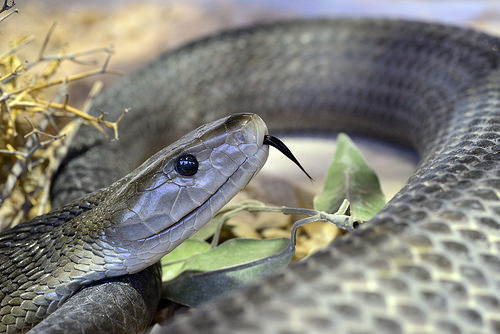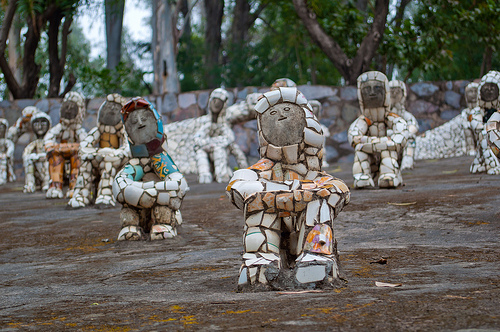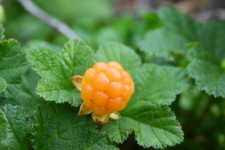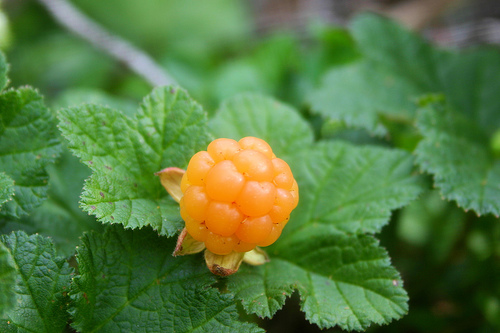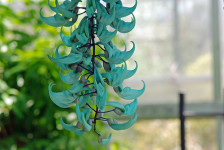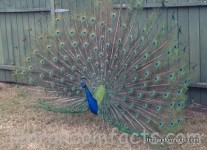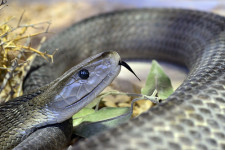
One definitely should not cross the path of a black mamba.
- Black mambas are a snake species native to the grassy plains, woody areas and rocky habitats of African countries south of the Sahara Desert.
- The scientific name of the black mamba is Dendroaspis polylepis and it is from the family Elapidae, a family of venomous snakes.
- Black mambas generally reach a length of 2 to 3 metres (6.6 to 9.8 feet), though they can be as long as 4.3 metres (14 feet), and they can weigh as much as 1.6 kilograms (3.5 pounds); and are notable for being the longest venomous snake in Africa.
- Black mambas can be grey, brown, or a brown-green colour, however the inside of its mouth is black, hence the word ‘black’ in its common name.
- Black mambas are very capable hunters, fitted with deadly venom and speedy movements, reaching speeds of at least 11 km/h (6.8 mph) and up to 20 km/h (12.4 mph).
A Black Mamba
Image courtesy of Herman Pijpers/Flickr
- The diet of the black mamba consists primarily of birds, bats and smaller mammals, including rodents.
- A black mamba’s bite is easily deadly, and can cause a fatality in a human within 20 minutes, or up to 15 hours if left untreated, by causing the shutdown of the nervous system.
- Black mambas are preyed on by certain snake species and some birds of prey, and the occasional mongoose; and they have an average lifespan of around 11 years.
- Black mambas have a status of being particularly dangerous, the most dangerous snake in Africa; but despite this, the snake would rather shy away from humans as it is relatively timid, always attempting to keep distance from potential threats.
- Female black mambas lay from 6 to 17 eggs in a hollow or cavity in or on the ground, and once the eggs are laid, they are left alone to hatch, afterwhich the young are required to take care of themselves.
Bibliography:
Black Mamba, 2016, National Geographic, http://animals.nationalgeographic.com.au/animals/reptiles/black-mamba/
Black Mamba, 2016, Wikipedia, https://en.wikipedia.org/wiki/Black_mamba
Black Mamba (Dendroaspis polylepis), n.d, Wildscreen Arkive, http://www.arkive.org/black-mamba/dendroaspis-polylepis/
Schott R, Dendroarspis polylepis, 2005, Animal Diversity Web, http://animaldiversity.org/accounts/Dendroaspis_polylepis/






